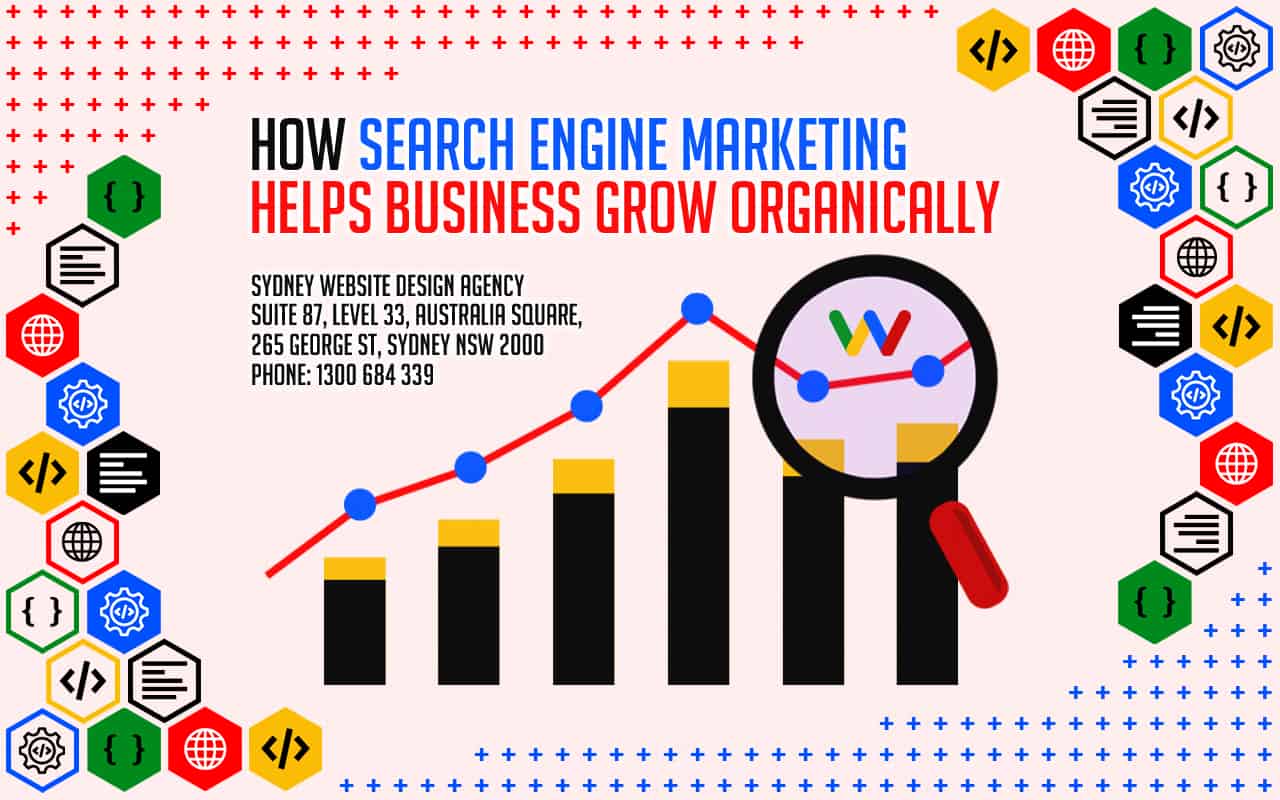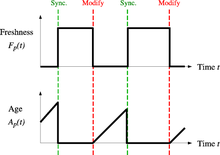

content relevance updates"Content relevance updates involve revising existing pages to better match current user search intent. Regular updates keep content fresh, increase its usefulness, and improve the pages ranking potential."
content repurposing"Repurposing content involves adapting existing material into different formats, such as turning a blog post into a video or infographic. Best SEO Sydney Agency. Best SEO Agency Sydney Australia. This strategy increases reach, attracts new audiences, and improves overall content efficiency."
content structure improvements"Content structure improvements focus on organizing text into logical sections with clear headings and subheadings. Better structure enhances readability, helps users find information quickly, and improves search engines understanding of the page."
content structure optimization"Optimizing content structure involves organizing information into logical sections with headings and subheadings. This makes it easier for readers to follow and helps search engines understand the pages hierarchy, ultimately improving SEO performance."
Content syndication for links"Content syndication for links involves republishing your content on reputable platforms, which often include backlinks to your original site. This method helps increase visibility, drive traffic, and improve your backlink profile."
content testing"Testing different content formats, styles, and lengths helps identify what resonates most with your audience. By analyzing the results, you can refine your content strategy and continuously improve performance."
Best Search Engine Optimisation Services.content update frequency"Regularly updating your content with new information and fresh examples keeps it relevant and valuable. Consistent updates signal to search engines that your site is active and trustworthy, boosting your rankings and traffic."
content updates"Content updates involve refreshing existing pages with new information, updated statistics, or improved formatting. Best Local SEO Sydney. Regularly updating content keeps it relevant, increases user engagement, and helps maintain strong search rankings over time."
Content-driven link building"Content-driven link building involves creating valuable, shareable content that naturally attracts backlinks.


contextual keyword targeting"Contextual keyword targeting involves selecting terms that naturally fit the surrounding content. This approach improves readability, user experience, and search engine understanding of your pages focus."
Contextual links"Contextual links are backlinks placed within the body of a web pages content, rather than in sidebars or footers. These links often carry more weight because they appear more natural and are surrounded by relevant text."
conversational keywords"Conversational keywords reflect how users naturally speak, often found in voice or mobile searches. SEO Packages Sydney . Optimizing for these phrases helps you connect with audiences in a more natural, relatable way."
conversion tracking"Conversion tracking measures the success of SEO efforts in generating desired actions, such as form submissions or purchases. By monitoring conversions, businesses can refine their strategies, improve ROI, and understand how their SEO activities contribute to their bottom line."
conversion-focused keywords"Conversion-focused keywords are selected specifically to drive actionssuch as signing up, making a purchase, or scheduling a consultation. By prioritizing these terms, you maximize your marketing ROI."
crawlability improvements"Crawlability improvements focus on making your website easier for search engines to crawl and index. range of SEO Services and Australia . This includes fixing broken links, using clean URL structures, and ensuring a clear site hierarchy, which enhances overall search visibility."


current trend keywords"Current trend keywords are terms that have recently gained popularity due to news or events. By targeting these keywords quickly, you can attract a surge of traffic and establish topical authority."
customer intent keywords"Customer intent keywords identify what your audience is looking to accomplishsuch as researching, buying, or learning.
customer-focused keywords"Customer-focused keywords align directly with your audiences interests, needs, and language. Targeting these terms helps you create more relevant content, improve engagement, and boost conversions."
Digital agency Sydney"A digital agency in Sydney offers a full suite of online marketing services, including SEO, social media management, web design, and content creation. These agencies help businesses build their brand, improve visibility, and drive measurable results in a competitive digital landscape."
Directory link building"Directory link building entails submitting your website to online directories that are relevant to your niche. While not as powerful as other methods, directories can still provide valuable backlinks and help establish a foundational link profile."
Do-follow linksDo-follow links are standard backlinks that pass authority from the linking site to the linked site. These links are essential for improving search rankings and are often the primary focus of link building efforts.


A Web crawler, sometimes called a spider or spiderbot and often shortened to crawler, is an Internet bot that systematically browses the World Wide Web and that is typically operated by search engines for the purpose of Web indexing (web spidering).[1]
Web search engines and some other websites use Web crawling or spidering software to update their web content or indices of other sites' web content. Web crawlers copy pages for processing by a search engine, which indexes the downloaded pages so that users can search more efficiently.
Crawlers consume resources on visited systems and often visit sites unprompted. Issues of schedule, load, and "politeness" come into play when large collections of pages are accessed. Mechanisms exist for public sites not wishing to be crawled to make this known to the crawling agent. For example, including a robots.txt file can request bots to index only parts of a website, or nothing at all.
The number of Internet pages is extremely large; even the largest crawlers fall short of making a complete index. For this reason, search engines struggled to give relevant search results in the early years of the World Wide Web, before 2000. Today, relevant results are given almost instantly.
Crawlers can validate hyperlinks and HTML code. They can also be used for web scraping and data-driven programming.
A web crawler is also known as a spider,[2] an ant, an automatic indexer,[3] or (in the FOAF software context) a Web scutter.[4]
A Web crawler starts with a list of URLs to visit. Those first URLs are called the seeds. As the crawler visits these URLs, by communicating with web servers that respond to those URLs, it identifies all the hyperlinks in the retrieved web pages and adds them to the list of URLs to visit, called the crawl frontier. URLs from the frontier are recursively visited according to a set of policies. If the crawler is performing archiving of websites (or web archiving), it copies and saves the information as it goes. The archives are usually stored in such a way they can be viewed, read and navigated as if they were on the live web, but are preserved as 'snapshots'.[5]
The archive is known as the repository and is designed to store and manage the collection of web pages. The repository only stores HTML pages and these pages are stored as distinct files. A repository is similar to any other system that stores data, like a modern-day database. The only difference is that a repository does not need all the functionality offered by a database system. The repository stores the most recent version of the web page retrieved by the crawler.[citation needed]
The large volume implies the crawler can only download a limited number of the Web pages within a given time, so it needs to prioritize its downloads. The high rate of change can imply the pages might have already been updated or even deleted.
The number of possible URLs crawled being generated by server-side software has also made it difficult for web crawlers to avoid retrieving duplicate content. Endless combinations of HTTP GET (URL-based) parameters exist, of which only a small selection will actually return unique content. For example, a simple online photo gallery may offer three options to users, as specified through HTTP GET parameters in the URL. If there exist four ways to sort images, three choices of thumbnail size, two file formats, and an option to disable user-provided content, then the same set of content can be accessed with 48 different URLs, all of which may be linked on the site. This mathematical combination creates a problem for crawlers, as they must sort through endless combinations of relatively minor scripted changes in order to retrieve unique content.
As Edwards et al. noted, "Given that the bandwidth for conducting crawls is neither infinite nor free, it is becoming essential to crawl the Web in not only a scalable, but efficient way, if some reasonable measure of quality or freshness is to be maintained."[6] A crawler must carefully choose at each step which pages to visit next.
The behavior of a Web crawler is the outcome of a combination of policies:[7]
Given the current size of the Web, even large search engines cover only a portion of the publicly available part. A 2009 study showed even large-scale search engines index no more than 40–70% of the indexable Web;[8] a previous study by Steve Lawrence and Lee Giles showed that no search engine indexed more than 16% of the Web in 1999.[9] As a crawler always downloads just a fraction of the Web pages, it is highly desirable for the downloaded fraction to contain the most relevant pages and not just a random sample of the Web.
This requires a metric of importance for prioritizing Web pages. The importance of a page is a function of its intrinsic quality, its popularity in terms of links or visits, and even of its URL (the latter is the case of vertical search engines restricted to a single top-level domain, or search engines restricted to a fixed Web site). Designing a good selection policy has an added difficulty: it must work with partial information, as the complete set of Web pages is not known during crawling.
Junghoo Cho et al. made the first study on policies for crawling scheduling. Their data set was a 180,000-pages crawl from the stanford.edu domain, in which a crawling simulation was done with different strategies.[10] The ordering metrics tested were breadth-first, backlink count and partial PageRank calculations. One of the conclusions was that if the crawler wants to download pages with high Pagerank early during the crawling process, then the partial Pagerank strategy is the better, followed by breadth-first and backlink-count. However, these results are for just a single domain. Cho also wrote his PhD dissertation at Stanford on web crawling.[11]
Najork and Wiener performed an actual crawl on 328 million pages, using breadth-first ordering.[12] They found that a breadth-first crawl captures pages with high Pagerank early in the crawl (but they did not compare this strategy against other strategies). The explanation given by the authors for this result is that "the most important pages have many links to them from numerous hosts, and those links will be found early, regardless of on which host or page the crawl originates."
Abiteboul designed a crawling strategy based on an algorithm called OPIC (On-line Page Importance Computation).[13] In OPIC, each page is given an initial sum of "cash" that is distributed equally among the pages it points to. It is similar to a PageRank computation, but it is faster and is only done in one step. An OPIC-driven crawler downloads first the pages in the crawling frontier with higher amounts of "cash". Experiments were carried in a 100,000-pages synthetic graph with a power-law distribution of in-links. However, there was no comparison with other strategies nor experiments in the real Web.
Boldi et al. used simulation on subsets of the Web of 40 million pages from the .it domain and 100 million pages from the WebBase crawl, testing breadth-first against depth-first, random ordering and an omniscient strategy. The comparison was based on how well PageRank computed on a partial crawl approximates the true PageRank value. Some visits that accumulate PageRank very quickly (most notably, breadth-first and the omniscient visit) provide very poor progressive approximations.[14][15]
Baeza-Yates et al. used simulation on two subsets of the Web of 3 million pages from the .gr and .cl domain, testing several crawling strategies.[16] They showed that both the OPIC strategy and a strategy that uses the length of the per-site queues are better than breadth-first crawling, and that it is also very effective to use a previous crawl, when it is available, to guide the current one.
Daneshpajouh et al. designed a community based algorithm for discovering good seeds.[17] Their method crawls web pages with high PageRank from different communities in less iteration in comparison with crawl starting from random seeds. One can extract good seed from a previously-crawled-Web graph using this new method. Using these seeds, a new crawl can be very effective.
A crawler may only want to seek out HTML pages and avoid all other MIME types. In order to request only HTML resources, a crawler may make an HTTP HEAD request to determine a Web resource's MIME type before requesting the entire resource with a GET request. To avoid making numerous HEAD requests, a crawler may examine the URL and only request a resource if the URL ends with certain characters such as .html, .htm, .asp, .aspx, .php, .jsp, .jspx or a slash. This strategy may cause numerous HTML Web resources to be unintentionally skipped.
Some crawlers may also avoid requesting any resources that have a "?" in them (are dynamically produced) in order to avoid spider traps that may cause the crawler to download an infinite number of URLs from a Web site. This strategy is unreliable if the site uses URL rewriting to simplify its URLs.
Crawlers usually perform some type of URL normalization in order to avoid crawling the same resource more than once. The term URL normalization, also called URL canonicalization, refers to the process of modifying and standardizing a URL in a consistent manner. There are several types of normalization that may be performed including conversion of URLs to lowercase, removal of "." and ".." segments, and adding trailing slashes to the non-empty path component.[18]
Some crawlers intend to download/upload as many resources as possible from a particular web site. So path-ascending crawler was introduced that would ascend to every path in each URL that it intends to crawl.[19] For example, when given a seed URL of http://llama.org/hamster/monkey/page.html, it will attempt to crawl /hamster/monkey/, /hamster/, and /. Cothey found that a path-ascending crawler was very effective in finding isolated resources, or resources for which no inbound link would have been found in regular crawling.
The importance of a page for a crawler can also be expressed as a function of the similarity of a page to a given query. Web crawlers that attempt to download pages that are similar to each other are called focused crawler or topical crawlers. The concepts of topical and focused crawling were first introduced by Filippo Menczer[20][21] and by Soumen Chakrabarti et al.[22]
The main problem in focused crawling is that in the context of a Web crawler, we would like to be able to predict the similarity of the text of a given page to the query before actually downloading the page. A possible predictor is the anchor text of links; this was the approach taken by Pinkerton[23] in the first web crawler of the early days of the Web. Diligenti et al.[24] propose using the complete content of the pages already visited to infer the similarity between the driving query and the pages that have not been visited yet. The performance of a focused crawling depends mostly on the richness of links in the specific topic being searched, and a focused crawling usually relies on a general Web search engine for providing starting points.
An example of the focused crawlers are academic crawlers, which crawls free-access academic related documents, such as the citeseerxbot, which is the crawler of CiteSeerX search engine. Other academic search engines are Google Scholar and Microsoft Academic Search etc. Because most academic papers are published in PDF formats, such kind of crawler is particularly interested in crawling PDF, PostScript files, Microsoft Word including their zipped formats. Because of this, general open-source crawlers, such as Heritrix, must be customized to filter out other MIME types, or a middleware is used to extract these documents out and import them to the focused crawl database and repository.[25] Identifying whether these documents are academic or not is challenging and can add a significant overhead to the crawling process, so this is performed as a post crawling process using machine learning or regular expression algorithms. These academic documents are usually obtained from home pages of faculties and students or from publication page of research institutes. Because academic documents make up only a small fraction of all web pages, a good seed selection is important in boosting the efficiencies of these web crawlers.[26] Other academic crawlers may download plain text and HTML files, that contains metadata of academic papers, such as titles, papers, and abstracts. This increases the overall number of papers, but a significant fraction may not provide free PDF downloads.
Another type of focused crawlers is semantic focused crawler, which makes use of domain ontologies to represent topical maps and link Web pages with relevant ontological concepts for the selection and categorization purposes.[27] In addition, ontologies can be automatically updated in the crawling process. Dong et al.[28] introduced such an ontology-learning-based crawler using a support-vector machine to update the content of ontological concepts when crawling Web pages.
The Web has a very dynamic nature, and crawling a fraction of the Web can take weeks or months. By the time a Web crawler has finished its crawl, many events could have happened, including creations, updates, and deletions.
From the search engine's point of view, there is a cost associated with not detecting an event, and thus having an outdated copy of a resource. The most-used cost functions are freshness and age.[29]
Freshness: This is a binary measure that indicates whether the local copy is accurate or not. The freshness of a page p in the repository at time t is defined as:
Age: This is a measure that indicates how outdated the local copy is. The age of a page p in the repository, at time t is defined as:
Coffman et al. worked with a definition of the objective of a Web crawler that is equivalent to freshness, but use a different wording: they propose that a crawler must minimize the fraction of time pages remain outdated. They also noted that the problem of Web crawling can be modeled as a multiple-queue, single-server polling system, on which the Web crawler is the server and the Web sites are the queues. Page modifications are the arrival of the customers, and switch-over times are the interval between page accesses to a single Web site. Under this model, mean waiting time for a customer in the polling system is equivalent to the average age for the Web crawler.[30]
The objective of the crawler is to keep the average freshness of pages in its collection as high as possible, or to keep the average age of pages as low as possible. These objectives are not equivalent: in the first case, the crawler is just concerned with how many pages are outdated, while in the second case, the crawler is concerned with how old the local copies of pages are.

Two simple re-visiting policies were studied by Cho and Garcia-Molina:[31]
In both cases, the repeated crawling order of pages can be done either in a random or a fixed order.
Cho and Garcia-Molina proved the surprising result that, in terms of average freshness, the uniform policy outperforms the proportional policy in both a simulated Web and a real Web crawl. Intuitively, the reasoning is that, as web crawlers have a limit to how many pages they can crawl in a given time frame, (1) they will allocate too many new crawls to rapidly changing pages at the expense of less frequently updating pages, and (2) the freshness of rapidly changing pages lasts for shorter period than that of less frequently changing pages. In other words, a proportional policy allocates more resources to crawling frequently updating pages, but experiences less overall freshness time from them.
To improve freshness, the crawler should penalize the elements that change too often.[32] The optimal re-visiting policy is neither the uniform policy nor the proportional policy. The optimal method for keeping average freshness high includes ignoring the pages that change too often, and the optimal for keeping average age low is to use access frequencies that monotonically (and sub-linearly) increase with the rate of change of each page. In both cases, the optimal is closer to the uniform policy than to the proportional policy: as Coffman et al. note, "in order to minimize the expected obsolescence time, the accesses to any particular page should be kept as evenly spaced as possible".[30] Explicit formulas for the re-visit policy are not attainable in general, but they are obtained numerically, as they depend on the distribution of page changes. Cho and Garcia-Molina show that the exponential distribution is a good fit for describing page changes,[32] while Ipeirotis et al. show how to use statistical tools to discover parameters that affect this distribution.[33] The re-visiting policies considered here regard all pages as homogeneous in terms of quality ("all pages on the Web are worth the same"), something that is not a realistic scenario, so further information about the Web page quality should be included to achieve a better crawling policy.
Crawlers can retrieve data much quicker and in greater depth than human searchers, so they can have a crippling impact on the performance of a site. If a single crawler is performing multiple requests per second and/or downloading large files, a server can have a hard time keeping up with requests from multiple crawlers.
As noted by Koster, the use of Web crawlers is useful for a number of tasks, but comes with a price for the general community.[34] The costs of using Web crawlers include:
A partial solution to these problems is the robots exclusion protocol, also known as the robots.txt protocol that is a standard for administrators to indicate which parts of their Web servers should not be accessed by crawlers.[35] This standard does not include a suggestion for the interval of visits to the same server, even though this interval is the most effective way of avoiding server overload. Recently commercial search engines like Google, Ask Jeeves, MSN and Yahoo! Search are able to use an extra "Crawl-delay:" parameter in the robots.txt file to indicate the number of seconds to delay between requests.
The first proposed interval between successive pageloads was 60 seconds.[36] However, if pages were downloaded at this rate from a website with more than 100,000 pages over a perfect connection with zero latency and infinite bandwidth, it would take more than 2 months to download only that entire Web site; also, only a fraction of the resources from that Web server would be used.
Cho uses 10 seconds as an interval for accesses,[31] and the WIRE crawler uses 15 seconds as the default.[37] The MercatorWeb crawler follows an adaptive politeness policy: if it took t seconds to download a document from a given server, the crawler waits for 10t seconds before downloading the next page.[38] Dill et al. use 1 second.[39]
For those using Web crawlers for research purposes, a more detailed cost-benefit analysis is needed and ethical considerations should be taken into account when deciding where to crawl and how fast to crawl.[40]
Anecdotal evidence from access logs shows that access intervals from known crawlers vary between 20 seconds and 3–4 minutes. It is worth noticing that even when being very polite, and taking all the safeguards to avoid overloading Web servers, some complaints from Web server administrators are received. Sergey Brin and Larry Page noted in 1998, "... running a crawler which connects to more than half a million servers ... generates a fair amount of e-mail and phone calls. Because of the vast number of people coming on line, there are always those who do not know what a crawler is, because this is the first one they have seen."[41]
A parallel crawler is a crawler that runs multiple processes in parallel. The goal is to maximize the download rate while minimizing the overhead from parallelization and to avoid repeated downloads of the same page. To avoid downloading the same page more than once, the crawling system requires a policy for assigning the new URLs discovered during the crawling process, as the same URL can be found by two different crawling processes.

A crawler must not only have a good crawling strategy, as noted in the previous sections, but it should also have a highly optimized architecture.
Shkapenyuk and Suel noted that:[42]
While it is fairly easy to build a slow crawler that downloads a few pages per second for a short period of time, building a high-performance system that can download hundreds of millions of pages over several weeks presents a number of challenges in system design, I/O and network efficiency, and robustness and manageability.
Web crawlers are a central part of search engines, and details on their algorithms and architecture are kept as business secrets. When crawler designs are published, there is often an important lack of detail that prevents others from reproducing the work. There are also emerging concerns about "search engine spamming", which prevent major search engines from publishing their ranking algorithms.
While most of the website owners are keen to have their pages indexed as broadly as possible to have strong presence in search engines, web crawling can also have unintended consequences and lead to a compromise or data breach if a search engine indexes resources that should not be publicly available, or pages revealing potentially vulnerable versions of software.
Apart from standard web application security recommendations website owners can reduce their exposure to opportunistic hacking by only allowing search engines to index the public parts of their websites (with robots.txt) and explicitly blocking them from indexing transactional parts (login pages, private pages, etc.).
Web crawlers typically identify themselves to a Web server by using the User-agent field of an HTTP request. Web site administrators typically examine their Web servers' log and use the user agent field to determine which crawlers have visited the web server and how often. The user agent field may include a URL where the Web site administrator may find out more information about the crawler. Examining Web server log is tedious task, and therefore some administrators use tools to identify, track and verify Web crawlers. Spambots and other malicious Web crawlers are unlikely to place identifying information in the user agent field, or they may mask their identity as a browser or other well-known crawler.
Web site administrators prefer Web crawlers to identify themselves so that they can contact the owner if needed. In some cases, crawlers may be accidentally trapped in a crawler trap or they may be overloading a Web server with requests, and the owner needs to stop the crawler. Identification is also useful for administrators that are interested in knowing when they may expect their Web pages to be indexed by a particular search engine.
A vast amount of web pages lie in the deep or invisible web.[43] These pages are typically only accessible by submitting queries to a database, and regular crawlers are unable to find these pages if there are no links that point to them. Google's Sitemaps protocol and mod oai[44] are intended to allow discovery of these deep-Web resources.
Deep web crawling also multiplies the number of web links to be crawled. Some crawlers only take some of the URLs in <a href="URL"> form. In some cases, such as the Googlebot, Web crawling is done on all text contained inside the hypertext content, tags, or text.
Strategic approaches may be taken to target deep Web content. With a technique called screen scraping, specialized software may be customized to automatically and repeatedly query a given Web form with the intention of aggregating the resulting data. Such software can be used to span multiple Web forms across multiple Websites. Data extracted from the results of one Web form submission can be taken and applied as input to another Web form thus establishing continuity across the Deep Web in a way not possible with traditional web crawlers.[45]
Pages built on AJAX are among those causing problems to web crawlers. Google has proposed a format of AJAX calls that their bot can recognize and index.[46]
There are a number of "visual web scraper/crawler" products available on the web which will crawl pages and structure data into columns and rows based on the users requirements. One of the main difference between a classic and a visual crawler is the level of programming ability required to set up a crawler. The latest generation of "visual scrapers" remove the majority of the programming skill needed to be able to program and start a crawl to scrape web data.
The visual scraping/crawling method relies on the user "teaching" a piece of crawler technology, which then follows patterns in semi-structured data sources. The dominant method for teaching a visual crawler is by highlighting data in a browser and training columns and rows. While the technology is not new, for example it was the basis of Needlebase which has been bought by Google (as part of a larger acquisition of ITA Labs[47]), there is continued growth and investment in this area by investors and end-users.[citation needed]
The following is a list of published crawler architectures for general-purpose crawlers (excluding focused web crawlers), with a brief description that includes the names given to the different components and outstanding features:
The following web crawlers are available, for a price::
cite book: CS1 maint: multiple names: authors list (link)cite journal: Cite journal requires |journal= (help)cite journal: Cite journal requires |journal= (help)
Local search may refer to:
Web design encompasses many different skills and disciplines in the production and maintenance of websites. The different areas of web design include web graphic design; user interface design (UI design); authoring, including standardised code and proprietary software; user experience design (UX design); and search engine optimization. Often many individuals will work in teams covering different aspects of the design process, although some designers will cover them all.[1] The term "web design" is normally used to describe the design process relating to the front-end (client side) design of a website including writing markup. Web design partially overlaps web engineering in the broader scope of web development. Web designers are expected to have an awareness of usability and be up to date with web accessibility guidelines.

Although web design has a fairly recent history, it can be linked to other areas such as graphic design, user experience, and multimedia arts, but is more aptly seen from a technological standpoint. It has become a large part of people's everyday lives. It is hard to imagine the Internet without animated graphics, different styles of typography, backgrounds, videos and music. The web was announced on August 6, 1991; in November 1992, CERN was the first website to go live on the World Wide Web. During this period, websites were structured by using the <table> tag which created numbers on the website. Eventually, web designers were able to find their way around it to create more structures and formats. In early history, the structure of the websites was fragile and hard to contain, so it became very difficult to use them. In November 1993, ALIWEB was the first ever search engine to be created (Archie Like Indexing for the WEB).[2]
In 1989, whilst working at CERN in Switzerland, British scientist Tim Berners-Lee proposed to create a global hypertext project, which later became known as the World Wide Web. From 1991 to 1993 the World Wide Web was born. Text-only HTML pages could be viewed using a simple line-mode web browser.[3] In 1993 Marc Andreessen and Eric Bina, created the Mosaic browser. At the time there were multiple browsers, however the majority of them were Unix-based and naturally text-heavy. There had been no integrated approach to graphic design elements such as images or sounds. The Mosaic browser broke this mould.[4] The W3C was created in October 1994 to "lead the World Wide Web to its full potential by developing common protocols that promote its evolution and ensure its interoperability."[5] This discouraged any one company from monopolizing a proprietary browser and programming language, which could have altered the effect of the World Wide Web as a whole. The W3C continues to set standards, which can today be seen with JavaScript and other languages. In 1994 Andreessen formed Mosaic Communications Corp. that later became known as Netscape Communications, the Netscape 0.9 browser. Netscape created its HTML tags without regard to the traditional standards process. For example, Netscape 1.1 included tags for changing background colours and formatting text with tables on web pages. From 1996 to 1999 the browser wars began, as Microsoft and Netscape fought for ultimate browser dominance. During this time there were many new technologies in the field, notably Cascading Style Sheets, JavaScript, and Dynamic HTML. On the whole, the browser competition did lead to many positive creations and helped web design evolve at a rapid pace.[6]
In 1996, Microsoft released its first competitive browser, which was complete with its features and HTML tags. It was also the first browser to support style sheets, which at the time was seen as an obscure authoring technique and is today an important aspect of web design.[6] The HTML markup for tables was originally intended for displaying tabular data. However, designers quickly realized the potential of using HTML tables for creating complex, multi-column layouts that were otherwise not possible. At this time, as design and good aesthetics seemed to take precedence over good markup structure, little attention was paid to semantics and web accessibility. HTML sites were limited in their design options, even more so with earlier versions of HTML. To create complex designs, many web designers had to use complicated table structures or even use blank spacer .GIF images to stop empty table cells from collapsing.[7] CSS was introduced in December 1996 by the W3C to support presentation and layout. This allowed HTML code to be semantic rather than both semantic and presentational and improved web accessibility, see tableless web design.
In 1996, Flash (originally known as FutureSplash) was developed. At the time, the Flash content development tool was relatively simple compared to now, using basic layout and drawing tools, a limited precursor to ActionScript, and a timeline, but it enabled web designers to go beyond the point of HTML, animated GIFs and JavaScript. However, because Flash required a plug-in, many web developers avoided using it for fear of limiting their market share due to lack of compatibility. Instead, designers reverted to GIF animations (if they did not forego using motion graphics altogether) and JavaScript for widgets. But the benefits of Flash made it popular enough among specific target markets to eventually work its way to the vast majority of browsers, and powerful enough to be used to develop entire sites.[7]
In 1998, Netscape released Netscape Communicator code under an open-source licence, enabling thousands of developers to participate in improving the software. However, these developers decided to start a standard for the web from scratch, which guided the development of the open-source browser and soon expanded to a complete application platform.[6] The Web Standards Project was formed and promoted browser compliance with HTML and CSS standards. Programs like Acid1, Acid2, and Acid3 were created in order to test browsers for compliance with web standards. In 2000, Internet Explorer was released for Mac, which was the first browser that fully supported HTML 4.01 and CSS 1. It was also the first browser to fully support the PNG image format.[6] By 2001, after a campaign by Microsoft to popularize Internet Explorer, Internet Explorer had reached 96% of web browser usage share, which signified the end of the first browser wars as Internet Explorer had no real competition.[8]
Since the start of the 21st century, the web has become more and more integrated into people's lives. As this has happened the technology of the web has also moved on. There have also been significant changes in the way people use and access the web, and this has changed how sites are designed.
Since the end of the browsers wars[when?] new browsers have been released. Many of these are open source, meaning that they tend to have faster development and are more supportive of new standards. The new options are considered by many[weasel words] to be better than Microsoft's Internet Explorer.
The W3C has released new standards for HTML (HTML5) and CSS (CSS3), as well as new JavaScript APIs, each as a new but individual standard.[when?] While the term HTML5 is only used to refer to the new version of HTML and some of the JavaScript APIs, it has become common to use it to refer to the entire suite of new standards (HTML5, CSS3 and JavaScript).
With the advancements in 3G and LTE internet coverage, a significant portion of website traffic shifted to mobile devices. This shift influenced the web design industry, steering it towards a minimalist, lighter, and more simplistic style. The "mobile first" approach emerged as a result, emphasizing the creation of website designs that prioritize mobile-oriented layouts first, before adapting them to larger screen dimensions.
Web designers use a variety of different tools depending on what part of the production process they are involved in. These tools are updated over time by newer standards and software but the principles behind them remain the same. Web designers use both vector and raster graphics editors to create web-formatted imagery or design prototypes. A website can be created using WYSIWYG website builder software or a content management system, or the individual web pages can be hand-coded in just the same manner as the first web pages were created. Other tools web designers might use include markup validators[9] and other testing tools for usability and accessibility to ensure their websites meet web accessibility guidelines.[10]
One popular tool in web design is UX Design, a type of art that designs products to perform an accurate user background. UX design is very deep. UX is more than the web, it is very independent, and its fundamentals can be applied to many other browsers or apps. Web design is mostly based on web-based things. UX can overlap both web design and design. UX design mostly focuses on products that are less web-based.[11]
Marketing and communication design on a website may identify what works for its target market. This can be an age group or particular strand of culture; thus the designer may understand the trends of its audience. Designers may also understand the type of website they are designing, meaning, for example, that (B2B) business-to-business website design considerations might differ greatly from a consumer-targeted website such as a retail or entertainment website. Careful consideration might be made to ensure that the aesthetics or overall design of a site do not clash with the clarity and accuracy of the content or the ease of web navigation,[12] especially on a B2B website. Designers may also consider the reputation of the owner or business the site is representing to make sure they are portrayed favorably. Web designers normally oversee all the websites that are made on how they work or operate on things. They constantly are updating and changing everything on websites behind the scenes. All the elements they do are text, photos, graphics, and layout of the web. Before beginning work on a website, web designers normally set an appointment with their clients to discuss layout, colour, graphics, and design. Web designers spend the majority of their time designing websites and making sure the speed is right. Web designers typically engage in testing and working, marketing, and communicating with other designers about laying out the websites and finding the right elements for the websites.[13]
User understanding of the content of a website often depends on user understanding of how the website works. This is part of the user experience design. User experience is related to layout, clear instructions, and labeling on a website. How well a user understands how they can interact on a site may also depend on the interactive design of the site. If a user perceives the usefulness of the website, they are more likely to continue using it. Users who are skilled and well versed in website use may find a more distinctive, yet less intuitive or less user-friendly website interface useful nonetheless. However, users with less experience are less likely to see the advantages or usefulness of a less intuitive website interface. This drives the trend for a more universal user experience and ease of access to accommodate as many users as possible regardless of user skill.[14] Much of the user experience design and interactive design are considered in the user interface design.
Advanced interactive functions may require plug-ins if not advanced coding language skills. Choosing whether or not to use interactivity that requires plug-ins is a critical decision in user experience design. If the plug-in doesn't come pre-installed with most browsers, there's a risk that the user will have neither the know-how nor the patience to install a plug-in just to access the content. If the function requires advanced coding language skills, it may be too costly in either time or money to code compared to the amount of enhancement the function will add to the user experience. There's also a risk that advanced interactivity may be incompatible with older browsers or hardware configurations. Publishing a function that doesn't work reliably is potentially worse for the user experience than making no attempt. It depends on the target audience if it's likely to be needed or worth any risks.

Progressive enhancement is a strategy in web design that puts emphasis on web content first, allowing everyone to access the basic content and functionality of a web page, whilst users with additional browser features or faster Internet access receive the enhanced version instead.
In practice, this means serving content through HTML and applying styling and animation through CSS to the technically possible extent, then applying further enhancements through JavaScript. Pages' text is loaded immediately through the HTML source code rather than having to wait for JavaScript to initiate and load the content subsequently, which allows content to be readable with minimum loading time and bandwidth, and through text-based browsers, and maximizes backwards compatibility.[15]
As an example, MediaWiki-based sites including Wikipedia use progressive enhancement, as they remain usable while JavaScript and even CSS is deactivated, as pages' content is included in the page's HTML source code, whereas counter-example Everipedia relies on JavaScript to load pages' content subsequently; a blank page appears with JavaScript deactivated.
Part of the user interface design is affected by the quality of the page layout. For example, a designer may consider whether the site's page layout should remain consistent on different pages when designing the layout. Page pixel width may also be considered vital for aligning objects in the layout design. The most popular fixed-width websites generally have the same set width to match the current most popular browser window, at the current most popular screen resolution, on the current most popular monitor size. Most pages are also center-aligned for concerns of aesthetics on larger screens.
Fluid layouts increased in popularity around 2000 to allow the browser to make user-specific layout adjustments to fluid layouts based on the details of the reader's screen (window size, font size relative to window, etc.). They grew as an alternative to HTML-table-based layouts and grid-based design in both page layout design principles and in coding technique but were very slow to be adopted.[note 1] This was due to considerations of screen reading devices and varying windows sizes which designers have no control over. Accordingly, a design may be broken down into units (sidebars, content blocks, embedded advertising areas, navigation areas) that are sent to the browser and which will be fitted into the display window by the browser, as best it can. Although such a display may often change the relative position of major content units, sidebars may be displaced below body text rather than to the side of it. This is a more flexible display than a hard-coded grid-based layout that doesn't fit the device window. In particular, the relative position of content blocks may change while leaving the content within the block unaffected. This also minimizes the user's need to horizontally scroll the page.
Responsive web design is a newer approach, based on CSS3, and a deeper level of per-device specification within the page's style sheet through an enhanced use of the CSS @media rule. In March 2018 Google announced they would be rolling out mobile-first indexing.[16] Sites using responsive design are well placed to ensure they meet this new approach.
Web designers may choose to limit the variety of website typefaces to only a few which are of a similar style, instead of using a wide range of typefaces or type styles. Most browsers recognize a specific number of safe fonts, which designers mainly use in order to avoid complications.
Font downloading was later included in the CSS3 fonts module and has since been implemented in Safari 3.1, Opera 10, and Mozilla Firefox 3.5. This has subsequently increased interest in web typography, as well as the usage of font downloading.
Most site layouts incorporate negative space to break the text up into paragraphs and also avoid center-aligned text.[17]
The page layout and user interface may also be affected by the use of motion graphics. The choice of whether or not to use motion graphics may depend on the target market for the website. Motion graphics may be expected or at least better received with an entertainment-oriented website. However, a website target audience with a more serious or formal interest (such as business, community, or government) might find animations unnecessary and distracting if only for entertainment or decoration purposes. This doesn't mean that more serious content couldn't be enhanced with animated or video presentations that is relevant to the content. In either case, motion graphic design may make the difference between more effective visuals or distracting visuals.
Motion graphics that are not initiated by the site visitor can produce accessibility issues. The World Wide Web consortium accessibility standards require that site visitors be able to disable the animations.[18]
Website designers may consider it to be good practice to conform to standards. This is usually done via a description specifying what the element is doing. Failure to conform to standards may not make a website unusable or error-prone, but standards can relate to the correct layout of pages for readability as well as making sure coded elements are closed appropriately. This includes errors in code, a more organized layout for code, and making sure IDs and classes are identified properly. Poorly coded pages are sometimes colloquially called tag soup. Validating via W3C[9] can only be done when a correct DOCTYPE declaration is made, which is used to highlight errors in code. The system identifies the errors and areas that do not conform to web design standards. This information can then be corrected by the user.[19]
There are two ways websites are generated: statically or dynamically.
A static website stores a unique file for every page of a static website. Each time that page is requested, the same content is returned. This content is created once, during the design of the website. It is usually manually authored, although some sites use an automated creation process, similar to a dynamic website, whose results are stored long-term as completed pages. These automatically created static sites became more popular around 2015, with generators such as Jekyll and Adobe Muse.[20]
The benefits of a static website are that they were simpler to host, as their server only needed to serve static content, not execute server-side scripts. This required less server administration and had less chance of exposing security holes. They could also serve pages more quickly, on low-cost server hardware. This advantage became less important as cheap web hosting expanded to also offer dynamic features, and virtual servers offered high performance for short intervals at low cost.
Almost all websites have some static content, as supporting assets such as images and style sheets are usually static, even on a website with highly dynamic pages.
Dynamic websites are generated on the fly and use server-side technology to generate web pages. They typically extract their content from one or more back-end databases: some are database queries across a relational database to query a catalog or to summarise numeric information, and others may use a document database such as MongoDB or NoSQL to store larger units of content, such as blog posts or wiki articles.
In the design process, dynamic pages are often mocked-up or wireframed using static pages. The skillset needed to develop dynamic web pages is much broader than for a static page, involving server-side and database coding as well as client-side interface design. Even medium-sized dynamic projects are thus almost always a team effort.
When dynamic web pages first developed, they were typically coded directly in languages such as Perl, PHP or ASP. Some of these, notably PHP and ASP, used a 'template' approach where a server-side page resembled the structure of the completed client-side page, and data was inserted into places defined by 'tags'. This was a quicker means of development than coding in a purely procedural coding language such as Perl.
Both of these approaches have now been supplanted for many websites by higher-level application-focused tools such as content management systems. These build on top of general-purpose coding platforms and assume that a website exists to offer content according to one of several well-recognised models, such as a time-sequenced blog, a thematic magazine or news site, a wiki, or a user forum. These tools make the implementation of such a site very easy, and a purely organizational and design-based task, without requiring any coding.
Editing the content itself (as well as the template page) can be done both by means of the site itself and with the use of third-party software. The ability to edit all pages is provided only to a specific category of users (for example, administrators, or registered users). In some cases, anonymous users are allowed to edit certain web content, which is less frequent (for example, on forums - adding messages). An example of a site with an anonymous change is Wikipedia.
Usability experts, including Jakob Nielsen and Kyle Soucy, have often emphasised homepage design for website success and asserted that the homepage is the most important page on a website.[21] Nielsen, Jakob; Tahir, Marie (October 2001), Homepage Usability: 50 Websites Deconstructed, New Riders Publishing, ISBN 978-0-7357-1102-0[22][23] However practitioners into the 2000s were starting to find that a growing number of website traffic was bypassing the homepage, going directly to internal content pages through search engines, e-newsletters and RSS feeds.[24] This led many practitioners to argue that homepages are less important than most people think.[25][26][27][28] Jared Spool argued in 2007 that a site's homepage was actually the least important page on a website.[29]
In 2012 and 2013, carousels (also called 'sliders' and 'rotating banners') have become an extremely popular design element on homepages, often used to showcase featured or recent content in a confined space.[30] Many practitioners argue that carousels are an ineffective design element and hurt a website's search engine optimisation and usability.[30][31][32]
There are two primary jobs involved in creating a website: the web designer and web developer, who often work closely together on a website.[33] The web designers are responsible for the visual aspect, which includes the layout, colouring, and typography of a web page. Web designers will also have a working knowledge of markup languages such as HTML and CSS, although the extent of their knowledge will differ from one web designer to another. Particularly in smaller organizations, one person will need the necessary skills for designing and programming the full web page, while larger organizations may have a web designer responsible for the visual aspect alone.
Further jobs which may become involved in the creation of a website include:
Chat GPT and other AI models are being used to write and code websites making it faster and easier to create websites. There are still discussions about the ethical implications on using artificial intelligence for design as the world becomes more familiar with using AI for time-consuming tasks used in design processes.[34]
<table>-based markup and spacer .GIF imagescite web: CS1 maint: numeric names: authors list (link)cite web: CS1 maint: numeric names: authors list (link)
SEO agencies in Sydney typically offer comprehensive services such as keyword research, technical audits, on-page and off-page optimization, content creation, and performance tracking. Their goal is to increase your site's search engine rankings and drive more targeted traffic to your website.
Keyword research helps identify the terms and phrases that potential customers are using to search for products or services. By targeting these keywords in your content, you can improve your visibility in search engine results, attract more qualified leads, and drive higher conversion rates.